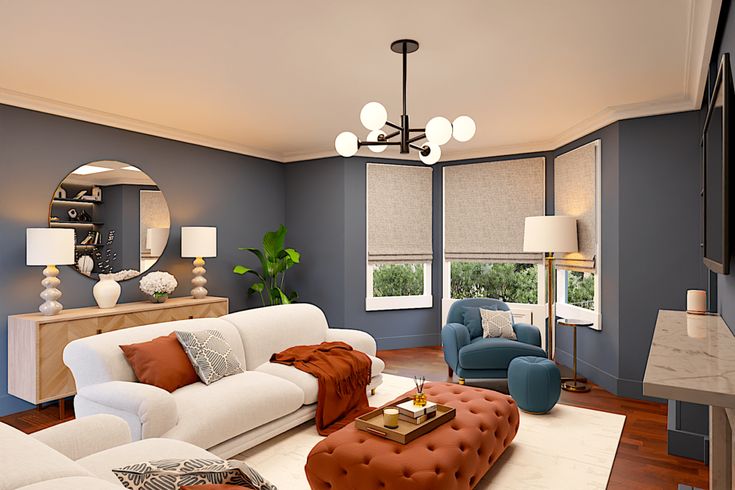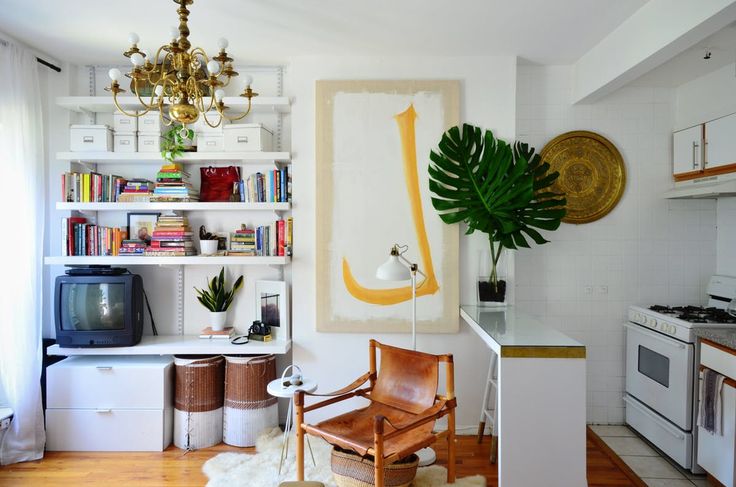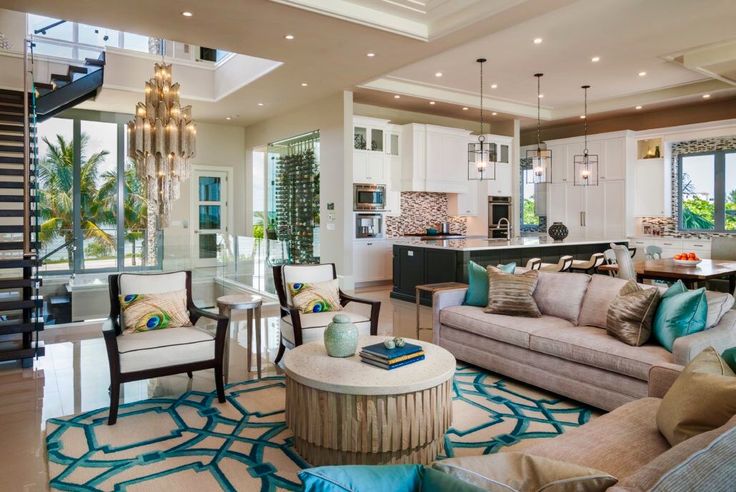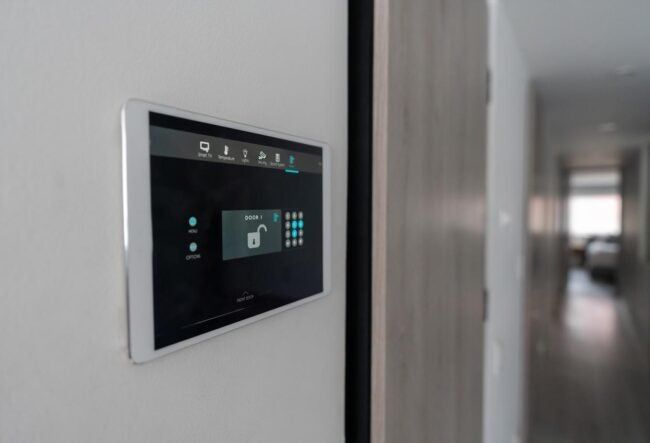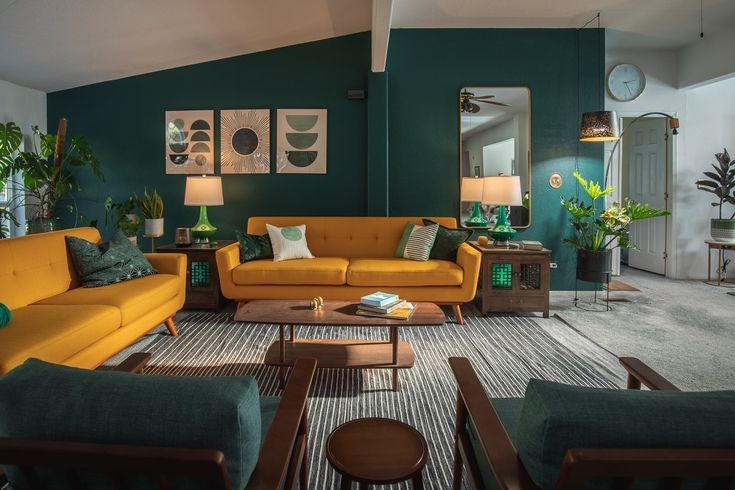The Ultimate Guide to Symmetrical and Asymmetrical Living Room Layouts
The Ultimate Guide to Symmetrical and Asymmetrical Living Room Layouts – Designing the perfect living room layout is a delicate balance between aesthetics and functionality. Whether you lean toward symmetrical arrangements or prefer the creative flair of asymmetry, each approach has its own unique appeal and practical advantages. In this comprehensive guide, we’ll explore the characteristics, benefits, and tips for achieving stunning symmetrical and asymmetrical living room layouts to suit your space and lifestyle.
What is a Symmetrical Living Room Layout?
A symmetrical living room layout is characterized by balance and harmony. It involves creating mirror-like arrangements where elements on one side of the room reflect those on the other. This classic design approach is ideal for creating a sense of order and tranquility.
Key Features of Symmetrical Layouts
- Balanced Design: Furniture and decor are arranged in a way that mirrors each side of the room.
- Focal Point: Often centered around a prominent feature, such as a fireplace, large window, or television.
- Timeless Appeal: The symmetry adds a sense of sophistication and elegance.
Benefits of Symmetrical Layouts
- Visual Harmony: Symmetry provides a calming and visually pleasing aesthetic.
- Easy Navigation: Balanced layouts often lead to intuitive flow and functionality.
- Traditional Charm: Perfect for homes with a classic or formal style.
Tips for Creating a Symmetrical Layout
- Start with a Focal Point: Arrange your furniture around a central feature like a coffee table or fireplace.
- Match Your Furniture: Use identical or similar pieces, such as matching sofas, chairs, or lamps, to enhance balance.
- Mirror Your Decor: Add symmetrical wall art, shelves, or plants to emphasize the balanced theme.
What is an Asymmetrical Living Room Layout?
An asymmetrical living room layout, on the other hand, embraces creativity and individuality. This approach does not rely on mirroring elements but instead focuses on achieving visual balance through contrast and variation.
Key Features of Asymmetrical Layouts
- Creative Freedom: Furniture and decor are arranged in a non-uniform manner.
- Visual Interest: Contrasting shapes, sizes, and colors add depth and intrigue.
- Flexible Design: Easier to adapt to unconventional room shapes or sizes.
Benefits of Asymmetrical Layouts
- Dynamic Aesthetic: Asymmetry introduces energy and personality to a space.
- Adaptability: Works well in both modern and eclectic styles.
- Enhanced Functionality: Allows for more customized layouts based on your specific needs.
Tips for Creating an Asymmetrical Layout
- Focus on Balance, Not Mirroring: Distribute visual weight evenly across the room using different elements.
- Layer Textures and Patterns: Mix materials, fabrics, and finishes to create a cohesive yet diverse look.
- Anchor the Space: Use a prominent piece, like a sectional sofa or statement rug, to ground the layout.
Symmetrical vs. Asymmetrical: How to Choose the Right Layout for Your Space
Consider the Room’s Purpose
- Formal Spaces: Symmetrical layouts are ideal for traditional living rooms used for entertaining guests.
- Casual Areas: Asymmetrical layouts offer a relaxed and inviting vibe, perfect for family rooms.
Assess the Room’s Shape and Size
- Rectangular Rooms: Symmetrical layouts work well in long, narrow spaces with a clear focal point.
- Irregular Spaces: Asymmetrical layouts are better suited for unconventional or open-concept areas.
Reflect Your Personal Style
- Classic Aesthetic: Choose symmetry for a timeless and polished look.
- Modern Flair: Opt for asymmetry to showcase your creativity and individuality.
Practical Examples of Symmetrical and Asymmetrical Layouts
Symmetrical Layout Example
- Furniture Arrangement: Place two identical sofas facing each other with a coffee table in the center.
- Decor: Add matching table lamps on side tables and hang a large piece of artwork above the focal point.
- Result: A harmonious and sophisticated space perfect for formal gatherings.
Asymmetrical Layout Example
- Furniture Arrangement: Position a sectional sofa on one side, complemented by a mix of chairs and a side table on the other.
- Decor: Combine a gallery wall with varying frame sizes and a mix of textures in throw pillows and rugs.
- Result: A lively and eclectic living room that feels unique and welcoming.
Common Mistakes to Avoid
For Symmetrical Layouts
- Overdoing the Matching: Avoid making everything identical; add subtle variations for interest.
- Neglecting Comfort: Ensure the layout remains functional and not just aesthetically pleasing.
For Asymmetrical Layouts
- Creating Chaos: Balance is key; don’t overcrowd one side of the room.
- Ignoring the Focal Point: Even in asymmetry, a central anchor helps tie the design together.
Final Thoughts
Choosing between a symmetrical and asymmetrical living room layout ultimately depends on your personal preferences, the function of the room, and its architectural features. Symmetrical layouts bring a sense of order and classic elegance, while asymmetrical designs offer creativity and a modern touch. By understanding the strengths and strategies of each approach, you can create a living room that perfectly suits your style and needs.
Whether you lean toward balance or embrace contrast, the key is to design with intention. Experiment, adapt, and most importantly, enjoy the process of transforming your living room into a space you’ll love to live in.
